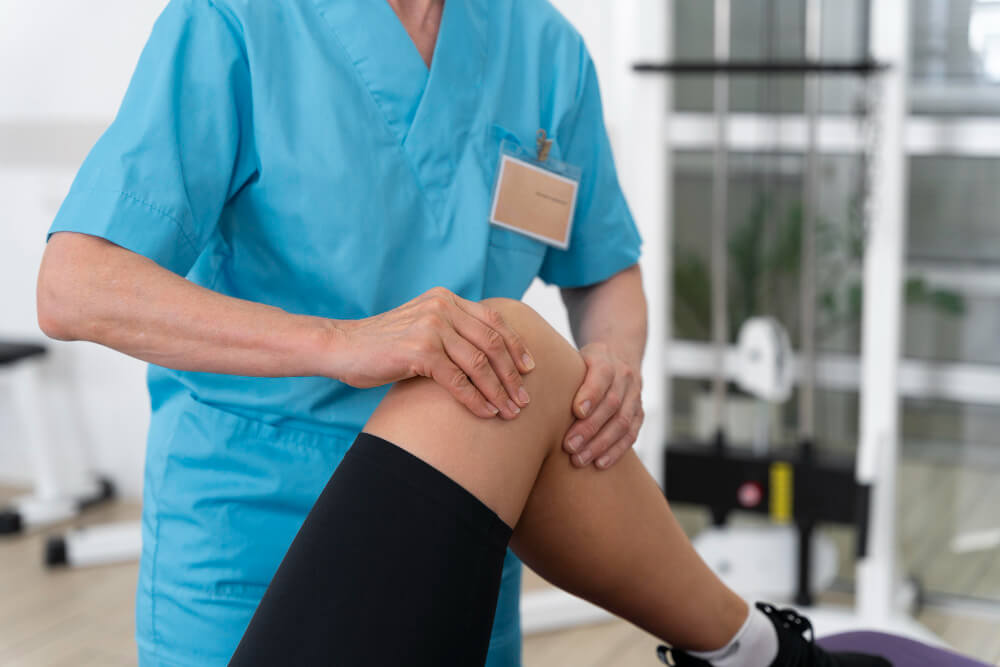Understanding and Overcoming the Challenge: Joint Pain Causes and Treatment Options
Joint pain is a common experience that affects millions of people worldwide. It can range from a mild annoyance to a debilitating condition, significantly impacting daily life. This comprehensive guide delves into the various causes of joint pain, explores effective treatment options, and empowers you to navigate the path towards a pain-free future.

Demystifying Joint Pain: An Overview
Joints are the body’s connection points where bones meet. They allow for movement and flexibility. The smooth, gliding surfaces of these connections rely on cartilage for cushioning and synovial fluid for lubrication. When this intricate system is disrupted, it leads to joint pain, stiffness, inflammation, and even restricted movement.
Types of Joint Pain
Joint pain can manifest in different ways depending on the underlying cause. Here’s a breakdown of common types:
- Acute Pain: This sudden onset of pain often stems from injuries like sprains, strains, or fractures. It typically presents with swelling, redness, and localized tenderness.
- Chronic Pain: This persistent pain can be caused by conditions like arthritis, overuse injuries, or autoimmune diseases. It can be a dull ache, a burning sensation, or a sharp pain that worsens with activity.
- Localized Pain: This pain is confined to a specific joint, making it easier to pinpoint the cause.
- Generalized Pain: This widespread pain affects multiple joints and can be a symptom of systemic conditions like fibromyalgia or lupus.
Unveiling the Culprits: Exploring Causes of Joint Pain
Joint pain can arise from various factors. Let’s explore some of the most common culprits:
- Arthritis: This umbrella term encompasses various types of joint degeneration. Osteoarthritis, the most common form, involves wear and tear of the cartilage. Rheumatoid arthritis, an autoimmune disease, causes inflammation and joint destruction.
- Injuries: Sprains, strains, fractures, and dislocations can all cause joint pain, inflammation, and instability.
- Overuse Injuries: Repetitive strain on a joint, such as from sports or certain occupations, can lead to tendinitis, bursitis, and other overuse injuries.
- Infections: Bacterial or viral infections can invade joints, causing pain, swelling, and redness.
- Autoimmune Diseases: Conditions like lupus and psoriasis can affect the joints, leading to pain, stiffness, and swelling.
- Crystal Deposition Diseases: Gout, a painful condition, results from the buildup of uric acid crystals in the joints.
- Bone Abnormalities: Conditions like bone spurs or misalignment can irritate and inflame joints.
- Metabolic Diseases: Obesity puts extra stress on joints, while diseases like diabetes can contribute to nerve pain that mimics joint pain.
- Age-Related Changes: As we age, the cartilage naturally breaks down, increasing the risk of osteoarthritis.
- Improper Posture: Poor posture can strain the joints, leading to pain and discomfort.
Charting the Course to Relief: Treatment Options for Joint Pain

The approach to treating joint pain depends on the underlying cause. Here are various treatment options to consider:
- Rest and Activity Modification: Reducing strenuous activities that aggravate pain can promote healing. However, complete immobilization can lead to stiffness. Gentle exercise is often encouraged to maintain mobility.
- Pain Medication: Over-the-counter pain relievers like ibuprofen or acetaminophen can help manage pain and inflammation. Stronger medications may be prescribed for severe cases.
- Physical Therapy: Physical therapists can design exercises to strengthen muscles around the joint, improve flexibility, and enhance range of motion.
- Heat and Cold Therapy: Applying heat packs or ice packs can offer temporary relief from pain and inflammation.
- Steroid Injections: Corticosteroid injections can reduce inflammation in severely painful joints.
- Joint Support: Braces or splints can provide stability and support to a weakened or injured joint.
- Weight Management: Maintaining a healthy weight reduces stress on weight-bearing joints like knees and hips.
- Lifestyle Modifications: Quitting smoking, improving posture, and maintaining a healthy diet can all contribute to joint health.
- Viscosupplementation: Injections of hyaluronic acid may be used for osteoarthritis to lubricate the joint.
- Surgery: Joint replacement surgery may be an option for severe joint damage or chronic pain that doesn’t respond to other treatments.
- Complementary and Alternative Therapies: Acupuncture, massage therapy, and yoga can offer pain relief and improve joint function.
Empowering Yourself: Tips for Optimal Joint Health
Here are some proactive steps you can take to maintain healthy joints and reduce the risk of future pain:
- Maintain a Healthy Weight: Excess weight puts stress on joints, particularly the knees and hips. Aim for a healthy weight through a balanced diet and regular exercise.
